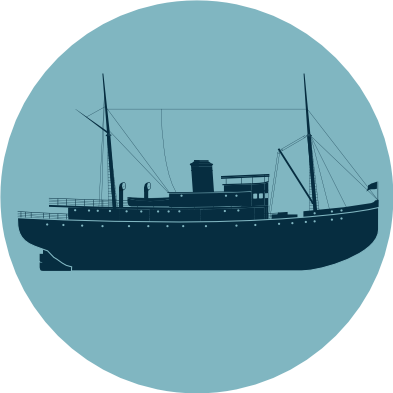
 0
0Transcription: "Seeing and hearing marine signals, a guarantee of safety"
This page includes the written transcript of this podcast, translated into English.
Various types of visual and audible signals have always been used on the world's seas to make navigation safer.
If navigation on the high seas has its challenges, so does navigation on our river.
Our beloved St. Lawrence River hides a dark side: it’s a real marine cemetery. We don't know the exact number of wrecks at the bottom of its waters, but certainly more than a thousand ships have sunk there over the centuries. Powerful tides, strong currents, numerous reefs and shoals, in addition to fog, storms, and often difficult winter conditions – all make navigation on the river highly perilous indeed.
This is why, in the middle of the 19th century, a safer waterway began to be developed. Among other things, it was marked with wooden buoys, lighthouses, lightships, light buoys, and range lights forming a string of fixed or rotating luminescence all along the banks of the river. There’s also a network of signal stations that maintain communications. The wire telegraph was installed on certain lighthouse stations starting in 1881. The keepers communicated with ships by means of flags and relayed the messages to the Quebec agency by telegraph. Wireless telegraphy between ships and shore stations began around 1906. In the 1950s, the dredging of several shipping channels, some of which had been dug in the 19th century, continued apace. This dredging work facilitated the passage of large ships.
As for the lighthouses, these giants so typical of the maritime world, most were built in the 19th century.
The first one was the lighthouse on Île Verte, which was put into service in 1809. Later on, 22 lighthouses would be erected between Anticosti Island and Quebec City. At that time, there were also lightships, which were anchored to shoals, where a permanent construction was impossible. The extraordinary world of lightships gradually fell into oblivion until two maritime history enthusiasts, Jean Cloutier and Jean-Pierre Charest, became interested in them. The Musée maritime du Québec presented an exhibition on lightships in 2017, following the publication of their book. Since the 1940s, this entire system of signals has been replaced by radio telephony and more efficient beaconing.
